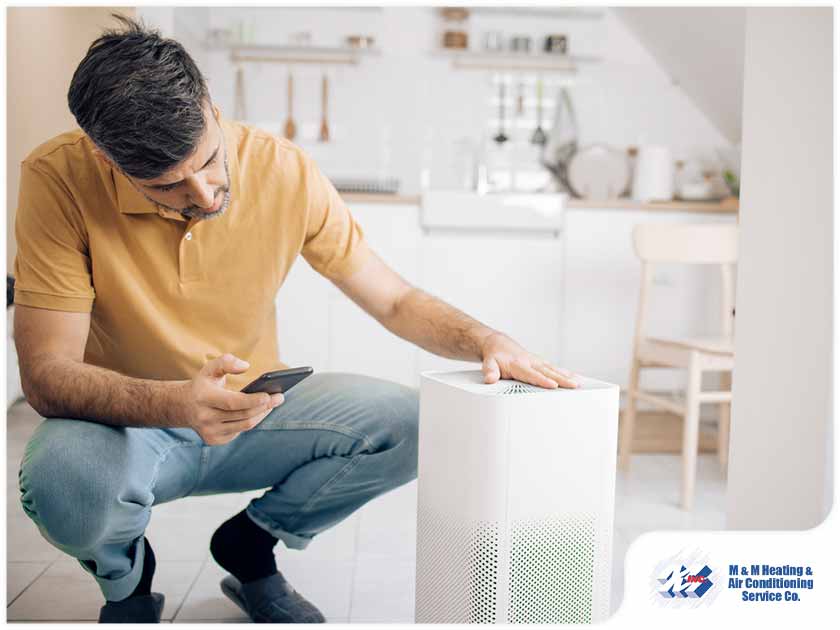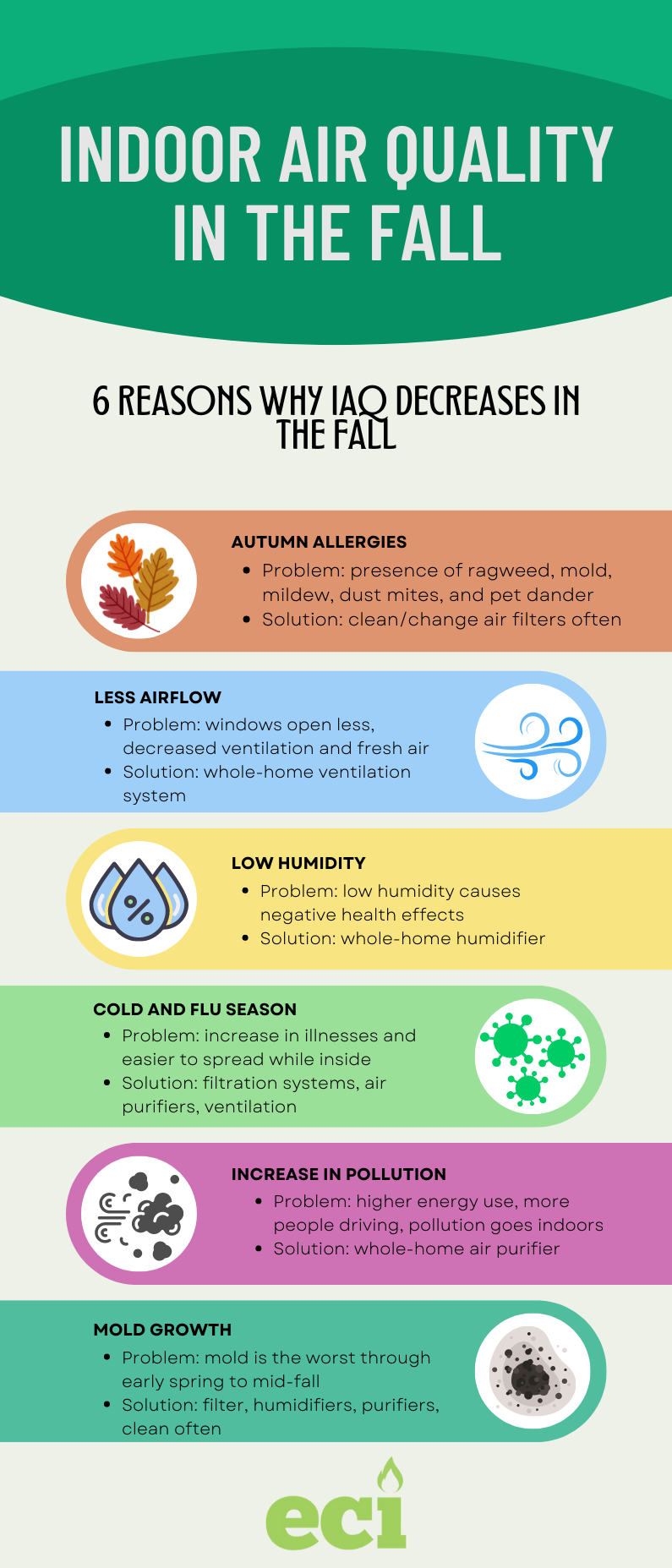Yes, air purifiers can help with indoor air quality during fall. They filter out allergens and pollutants.
During fall, indoor air quality often worsens. Leaves and mold spores can enter homes. Heating systems stir up dust. Pets shed more fur. All these factors can make breathing indoors more difficult. Air purifiers are designed to tackle these issues.
They capture particles and clean the air. This can lead to a healthier living environment. Whether you suffer from allergies or just want cleaner air, air purifiers might be the solution you need. In this post, we will explore how air purifiers can improve indoor air quality during the fall season.

Credit: www.amazon.com
Importance Of Indoor Air Quality
Indoor air quality becomes crucial during fall. As temperatures drop, we spend more time indoors. This makes the air we breathe inside our homes and offices even more important. Poor indoor air quality can lead to various health issues. Understanding its significance helps us take necessary measures to improve it.
Health Implications
Health problems can arise from breathing polluted indoor air. Common issues include headaches, fatigue, and respiratory problems. Long-term exposure can lead to chronic diseases like asthma and heart disease. Children and elderly people are particularly at risk. Keeping indoor air clean helps in maintaining good health.
Common Indoor Pollutants
Several pollutants can degrade indoor air quality. These include dust, pet dander, and mold. Chemical pollutants from cleaning products also contribute. Even cooking can release harmful particles into the air. Using air purifiers can help reduce these pollutants. Below is a table of common indoor pollutants and their sources:
| Pollutant | Source |
|---|---|
| Dust | Carpets, Furniture |
| Pet Dander | Pets |
| Mold | Damp Areas |
| Chemical Pollutants | Cleaning Products |
| Cooking Fumes | Cooking |
Reducing these pollutants can significantly improve indoor air quality. Air purifiers can be a valuable tool in this effort. They help filter out harmful particles, making the air safer to breathe.
Fall Season And Air Quality
The fall season brings cooler weather and beautiful foliage. Yet, it also brings challenges for indoor air quality. Windows stay closed more often. Heating systems kick on. This can affect the air you breathe inside your home.
Increased Pollutants
During fall, indoor pollutants can increase. Dust and pet dander collect as windows stay shut. Heating systems can stir up these particles. This makes the air less clean.
Cooking and fireplaces also add to indoor pollutants. These activities produce smoke and other particles. Over time, these pollutants build up in the home.
Seasonal Allergens
Fall is a peak time for allergens. Ragweed and mold spores are common. These allergens can enter your home through open doors or on clothing.
Once inside, they settle in carpets and furniture. This can trigger allergies. Symptoms include sneezing, itchy eyes, and a runny nose.
Air purifiers can help reduce these allergens. They filter out particles that cause symptoms. This makes breathing easier and improves comfort during the fall.
How Air Purifiers Work
Air purifiers improve indoor air quality, especially during the fall. They remove pollutants and allergens from the air. This makes your home healthier and more comfortable. Understanding how these devices work can help you choose the right one for your needs.
Filtration Mechanism
Most air purifiers use a filtration system. This system traps dust, pollen, and other particles. The air passes through a filter that captures these particles. The clean air is then released back into the room. HEPA filters are popular because they capture very small particles. They can remove up to 99.97% of particles that are 0.3 microns or larger.
Types Of Air Purifiers
There are several types of air purifiers. Each type uses a different method to clean the air. HEPA air purifiers are the most common. They use a high-efficiency particulate air filter to trap particles. Activated carbon air purifiers use a carbon filter to remove gases and odors. Ultraviolet (UV) air purifiers use UV light to kill bacteria and viruses. Ionizers release charged particles that attach to pollutants, making them easier to trap.
Choose the type that best suits your needs. Consider the size of the room and the type of pollutants you want to remove. An air purifier can make a big difference in your home’s air quality, especially during the fall.

Credit: www.mmheatair.com
Benefits Of Air Purifiers In Fall
As the fall season arrives, many people spend more time indoors. This change in weather can bring various indoor air quality issues. Air purifiers can help improve the air you breathe during fall. They offer many benefits, making your indoor environment healthier.
Reducing Allergens
Fall brings many allergens into homes. Pollen, dust mites, and pet dander are common culprits. Air purifiers can filter these particles out of the air. This helps reduce allergy symptoms. Cleaner air means less sneezing and fewer itchy eyes. Your home becomes a more comfortable place.
Combating Mold Spores
Mold can be a big problem in fall. Damp and humid conditions can cause mold growth. Mold spores can affect your health. Air purifiers with HEPA filters can trap these spores. This helps prevent respiratory issues. Breathing cleaner air means better health for you and your family.
Choosing The Right Air Purifier
Choosing the right air purifier can greatly improve indoor air quality during fall. With many options available, it can be hard to select the perfect one. This section will help you understand the key features to look for and how to choose based on size and coverage area.
Key Features To Look For
Not all air purifiers are created equal. Look for HEPA filters. These capture 99.97% of particles as small as 0.3 microns. A good purifier should also have activated carbon filters. These remove odors and harmful gases.
Noise level is another important feature. A quiet purifier won’t disturb your peace. Check for the Clean Air Delivery Rate (CADR). Higher CADR means faster purification.
Size And Coverage Area
Consider the size of the room where you’ll use the purifier. Small units work best in bedrooms or offices. Large units are suitable for living rooms or open spaces.
Each purifier lists its coverage area in square feet. Choose one that matches your room size for effective purification. Bigger is not always better. An oversized purifier may use more energy without added benefits.
By understanding these key features and considering size and coverage area, you can choose the right air purifier. This will keep your indoor air clean and healthy during fall.
Proper Maintenance Of Air Purifiers
Proper maintenance of air purifiers is essential for optimal performance. Regular upkeep ensures clean indoor air during the fall season. Maintaining air purifiers helps in removing allergens, dust, and other pollutants efficiently. Below are some key maintenance practices to keep your air purifier in top shape.
Filter Replacement
Replacing filters is crucial for air purifier efficiency. Most air purifiers have replaceable filters. Follow the manufacturer’s guidelines on how often to replace them. Generally, HEPA filters should be replaced every 6 to 12 months. Carbon filters may need replacement every 3 to 6 months. Regularly check the filters for dirt and debris.
| Filter Type | Replacement Frequency |
|---|---|
| HEPA Filter | 6 to 12 months |
| Carbon Filter | 3 to 6 months |
Cleaning Guidelines
Regular cleaning is vital for air purifiers. Here are some simple steps to follow:
- Turn off and unplug the air purifier.
- Remove the outer cover and filter.
- Use a soft cloth to wipe the exterior.
- Clean the filter compartment with a damp cloth.
- Allow all parts to dry completely before reassembling.
Ensure to clean pre-filters every month. They catch larger particles and extend the life of HEPA filters. Some pre-filters are washable. Check the manual for specific cleaning instructions.
Proper maintenance of air purifiers ensures they function effectively. This keeps your indoor air quality high during the fall season.
Additional Tips For Improving Indoor Air Quality
During fall, maintaining indoor air quality is crucial. Air purifiers can help, but there are additional tips to consider for better results. These tips will enhance air quality and create a healthier home environment.
Ventilation Practices
Proper ventilation is key to improving indoor air quality. Open windows for a few minutes daily to let fresh air in. Use exhaust fans in kitchens and bathrooms to remove excess moisture and odors. Install trickle vents on windows to allow a constant flow of fresh air. Keep interior doors open to ensure air circulates freely throughout your home.
Houseplants As Natural Purifiers
Houseplants can naturally purify indoor air. They absorb pollutants and release oxygen. Some effective plants include spider plants, snake plants, and peace lilies. Place these plants in various rooms to boost air quality. Ensure they receive enough light and water to thrive. Avoid over-watering to prevent mold growth.

Credit: www.amazon.com
Cost And Energy Considerations
Understanding the cost and energy considerations of using air purifiers is crucial. These factors play a significant role in your decision-making process. Let’s break down the initial investment and energy consumption to help you make an informed choice.
Initial Investment
Air purifiers come in various price ranges. The cost depends on the brand, size, and features. Basic models can start at around $50. High-end models can cost several hundred dollars. Consider your budget and needs. Do you need a purifier for a small room or an entire house? Larger units and those with advanced features will be more expensive. Think about the long-term benefits. Investing in a good air purifier can improve your indoor air quality significantly.
Energy Consumption
Energy consumption is another important factor. Air purifiers run continuously, so consider their power usage. Most air purifiers use between 50 to 200 watts. This can add up over time. Check the energy efficiency ratings. Look for Energy Star-rated models. These models use less energy and save on electricity costs. Remember, using an air purifier efficiently can help maintain a healthy indoor environment without a high energy bill.
Frequently Asked Questions
Do Air Purifiers Improve Indoor Air Quality?
Yes, air purifiers can significantly improve indoor air quality. They remove pollutants, allergens, and dust particles, making the air cleaner and healthier to breathe.
Are Air Purifiers Effective During Fall?
Air purifiers are effective during fall. They help reduce allergens like mold spores and dust mites, improving indoor air quality significantly.
What Types Of Pollutants Do Air Purifiers Remove?
Air purifiers remove various pollutants. These include dust, pet dander, pollen, smoke, and volatile organic compounds (VOCs), enhancing indoor air quality.
How Often Should You Use An Air Purifier?
Use an air purifier continuously for best results. Consistent use ensures the air stays clean and free from pollutants.
Conclusion
Air purifiers can significantly improve indoor air quality during fall. They remove allergens, dust, and pollutants. Breathing cleaner air helps your overall health. A good air purifier makes a noticeable difference. Choose one with a HEPA filter for best results.
Regular maintenance ensures it works effectively. Enjoy a healthier home this fall season. Cleaner air contributes to better well-being. Make it a priority for your family.
Rakib Sarwar is a Registered Pharmacist and a reputed health and wellness blogger. He has a great interest in Air purifiers.
